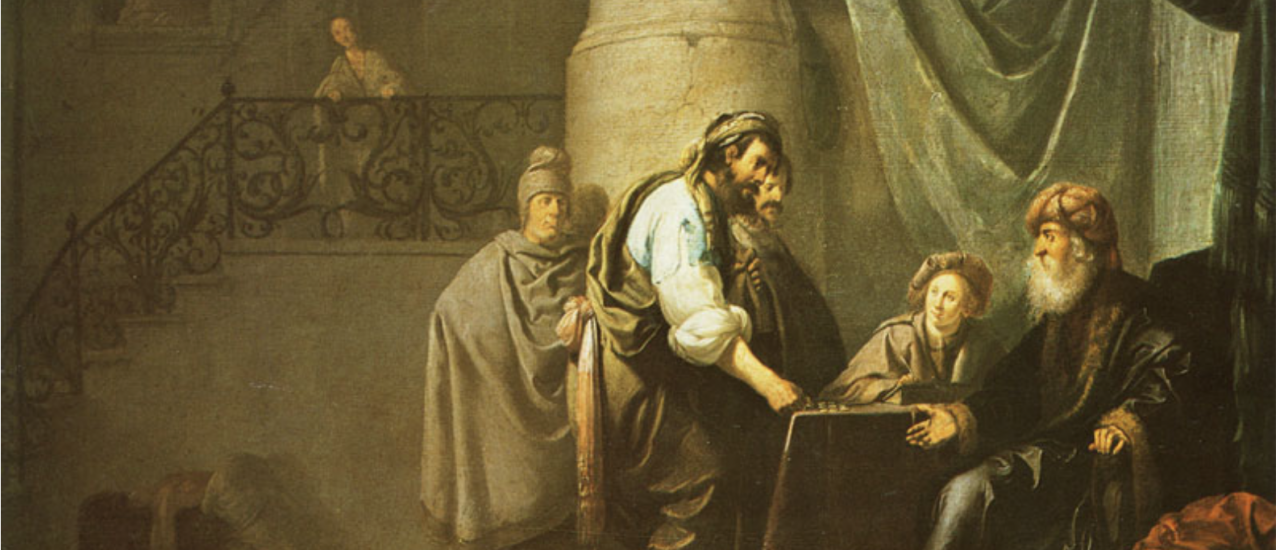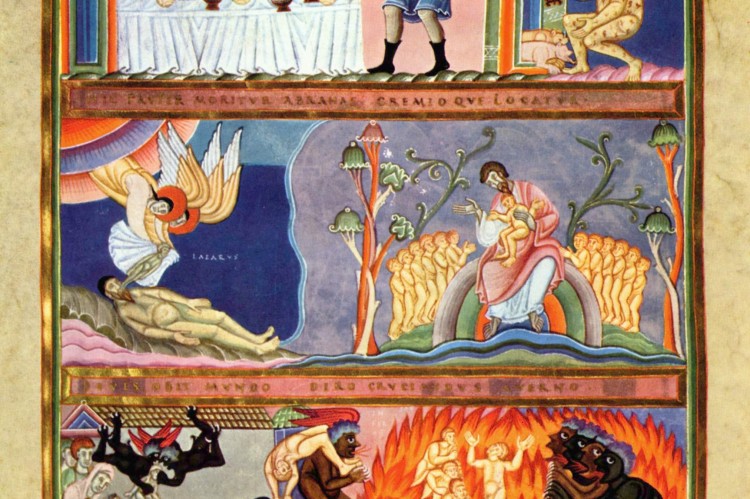As featured on the Oxford College Library blog.

Dr. Gowler's Honors Seminar, REL 373RQW
As featured on the Oxford College Library blog.
The original post is found here.
 |
I am delighted to have such outstanding students qualify for and enroll in my Honors Seminar, “Chorus of Voices: The ‘Afterlives’ of Parables.” The first two weeks of classes (we meet on T/Th) have been fantastic.
Our class has been given the privilege of meeting in the Special Collections Room of the Oxford College library (it’s not really a classroom). It’s a perfect location for our seminar, and the resources we need are either at our fingertips with online materials or just a short walk away in the stacks.
The seminar is really a “working group,” because it is a collaboration. The students are each working on a semester-long project, and I am working on a similar project (this book).
So far, students have picked the parable on which they want to work the entire semester. They will explore the reception history of “their” parable in different eras, perspectives, media, and so forth.
Students have picked the following parables on which to focus:
Each week every one of us will report (e.g., give a paper) on our progress. The students have already found some very interesting things–many of which I had not seen/heard before–so we are already learning a lot from each other
We started the class by establishing what “doing” reception history means, and we are accomplishing that primarily in a “Ways of Inquiry” (distinctive to Oxford College of Emory University) approach.
We started with Thomas Hart Benton’s Prodigal Son lithograph, talking about our initial observations/thoughts and then discussing what they needed to do/know in order to do a “reception history” of this image.
I won’t discuss those matters in detail, but in the other class periods, we examined other receptions of the parable of the Prodigal Son: (a) Chartres Cathedral (stained-glass window), (b) Antonia Pulci (play), (c) Albrecht Dürer (engraving), and (d) Robert Wilkins (blues song; we also talked about blues music in general and some other blues songs about parables).
Students have now read and critiqued the sections of my book on “The Parables and the Blues,” Albrecht Dürer, and Antonia Pulci. I am amazed at how quickly they have picked up essential elements of reception history (they work on the image, play, text, etc. itself before they read about it). They also have been extremely insightful about my book drafts, and they have already made significant contributions toward making the book better.
Starting the week after next, once students get going on their projects more fully, we will devote equal time in class to all projects–mine will merely be one of the five projects.
We are primarily focusing on the receptions themselves: we worked careful and extensively, for example, on both reading the lyrics of the blues songs we discussed, but we also spent a significant amount of class time listening to various versions of those blues songs–from the “original” version to more recent “redone” versions (Blind Joe Taggart, among others, deserves more “hits” on YouTube).
The original post is found here.
Jesus’ enigmatic and compelling parables have fascinated their hearers since he first uttered them, and during the intervening centuries his parables have produced a multitude of interpretations, ones that are found in a variety of forms, sources, and perspectives. This course will explore the “afterlives” of parables: their use, impact, and influence through the centuries. Students will choose the parables they wish to explore throughout different eras, perspectives, and media. Examples will come from art (e.g., Rembrandt, van Gogh, Sadao Watanabe, He Qi), music (e.g., the Rolling Stones, Hank Williams, Blind Willie Johnson, Kontakia), literature (e.g., Chaucer, Shakespeare, Flannery O’Connor, James Baldwin), science fiction (e.g., Octavia Butler), plays (e.g., Antonia Pulci), poetry (e.g., George Herbert, Emily Dickinson, Rudyard Kipling), film (e.g., Monty Python’s Life of Brian, Son of Man, from South Africa), politics (e.g., Martin Luther King, Jr., Clarence Jordan, Elsa Tamez), and ethics/religion/philosophy (e.g., Augustine, Thomas Aquinas, Kierkegaard).
This course will be interdisciplinary, and it will introduce students to the dialogues between biblical traditions and the cultures and communities who received and interpreted them. These explorations span two thousand years, and they are found in literature, visual art, music, plays, and other modes of interpretation. This class will thus explore in inter and multi-disciplinary ways all sorts of voices—secular and scared, influential and marginalized, “orthodox” and heterodox (including unusual or distinctive), ranging from the fairly famous to the fairly obscure.
This writing-intensive course is taught in a Ways of Inquiry (INQ) approach, one in which students not only learn important concepts, principles, assumptions, and terminology of Reception History, but they also actively learn and practice why and how scholars approach these texts the way they do. The focus is on exegesis: the multidisciplinary endeavor to understand these interpretations in the context of history, culture, religious practice, philosophy, ethics, politics, and social values. An INQ course begins with the interpretations, the questions and issues that result from reading/seeing/hearing them carefully from more than one approach or perspective. In other words, we will “start from scratch” and proceed step-by-step to build competencies in interpreting these interpretations of the parables.
I am delighted that the timing of the course overlaps with the visit of Chris Rowland, one of the foremost scholars in the Reception History of the Bible. He is coming in March as the Pierce Visiting Scholar, a faculty exchange program between Oxford University and Oxford College of Emory University that is one of the programs of the Pierce Institute. One of the things Chris will do while here is teach one session of the honors seminar. He also is giving a public lecture at Oxford College, and we are arranging an additional lecture at All Saints Episcopal Church in Atlanta. If you are in the area, you will want to come hear Chris. He is fantastic!
The total number of hits since I began the blog is less than the most popular biblioblog receives in one week (Jim West’s blog), but I knew going in that the audience would be very small even after the blog became established, as it were. I decided, also before starting the blog, that it would be worth it even with that very small audience for the following reasons:
So the blog has taken a little bit of extra time, but that has been helpful for me in thinking through what I wanted to write in the book, and I hope it has been helpful for the relatively small audience that reads all, some, or just one of the posts.
I am wondering whether, after the book comes out, I should continue this blog and expand it to the Reception History of the Gospels. We’ll see.
